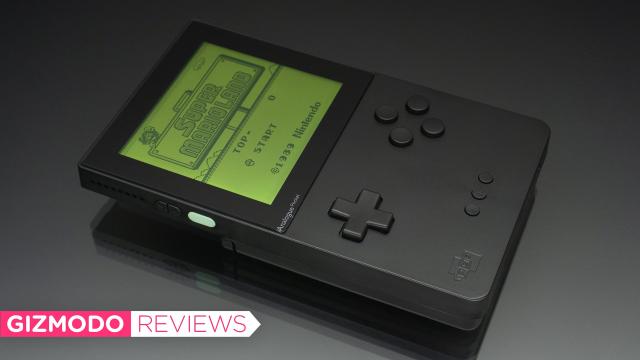The Analogue Pocket was revealed to the world back in October of 2019, and more than a year after preorders opened in August 2020, the portable console is finally here. It’s been a long wait for one of the most anticipated handhelds since the Nintendo Switch, and for those lucky enough to be getting their preordered Pockets in the coming weeks, the wait was entirely worth it.
Over the past five years, Analogue has been making a name for itself among retro gaming enthusiasts with modern updates to consoles like the NES, the Super Nintendo, the Sega Genesis, the TurboGrafx-16, and now the Game Boy line. Unlike many of the retro gaming devices we’ve reviewed that rely on software emulators to play classic titles (including Nintendo’s own Game & Watch revivals) Analogue takes an entirely different approach.
Every one of its consoles features a custom FPGA (or Field-Programmable Gate Array) chip that’s programmed to function exactly like the original electronics in classic consoles did. It allows Analogue’s consoles to play retro game cartridges absolutely flawlessly. There’s no skipped frames, no graphical errors, no audio sync issues, and sometimes, games play and sound even better than they did on the original hardware. The Analogue Pocket has one of these FPGA chips, too (two, actually, but the second isn’t used just yet) and pairs it with other upgraded features to create a modern Game Boy that’s just about perfect in every way.
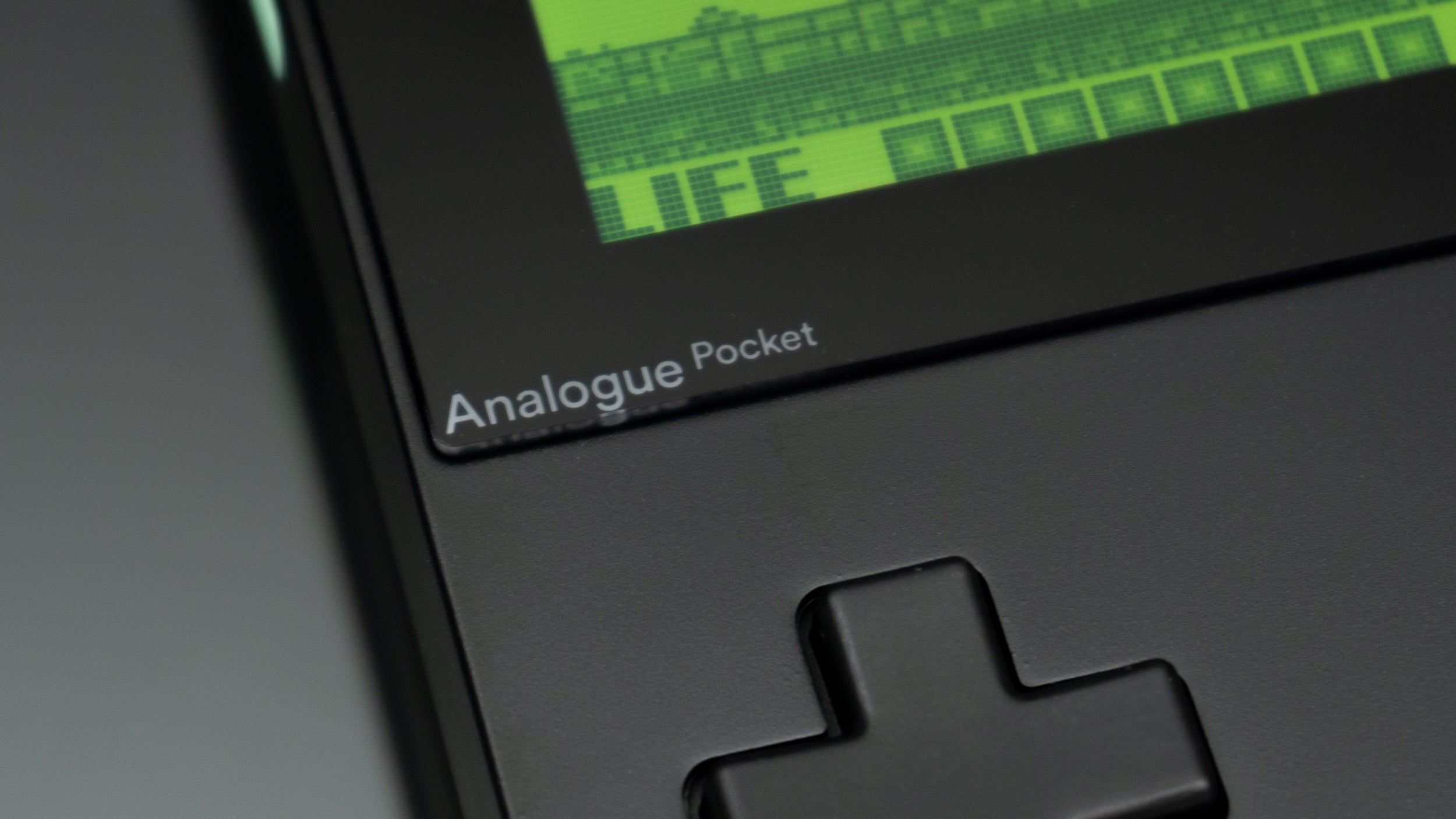
Analogue Pocket
WHAT IS IT?
A modern clone of classic handheld consoles that plays original game cartridges flawlessly without messy emulation.
PRICE
Originally $US200 ($281), now $US219 ($308) moving forward (as a result of the global supply chain issues).
LIKE
The high-res screen is absolutely stunning and it's even able to emulate the appearance of the displays on classic retro handhelds.
DISLIKE
The volume buttons on the side are a little small, the cartridge adapters can be awkward to use, and waiting for two years to get our hands on it was a true test of patience.
My Eyes Have Seen the Glory of That Beautiful Screen
My very first impression of the Analogue Pocket when taking it out of the box was that the handheld was a lot bigger than I thought it would be.
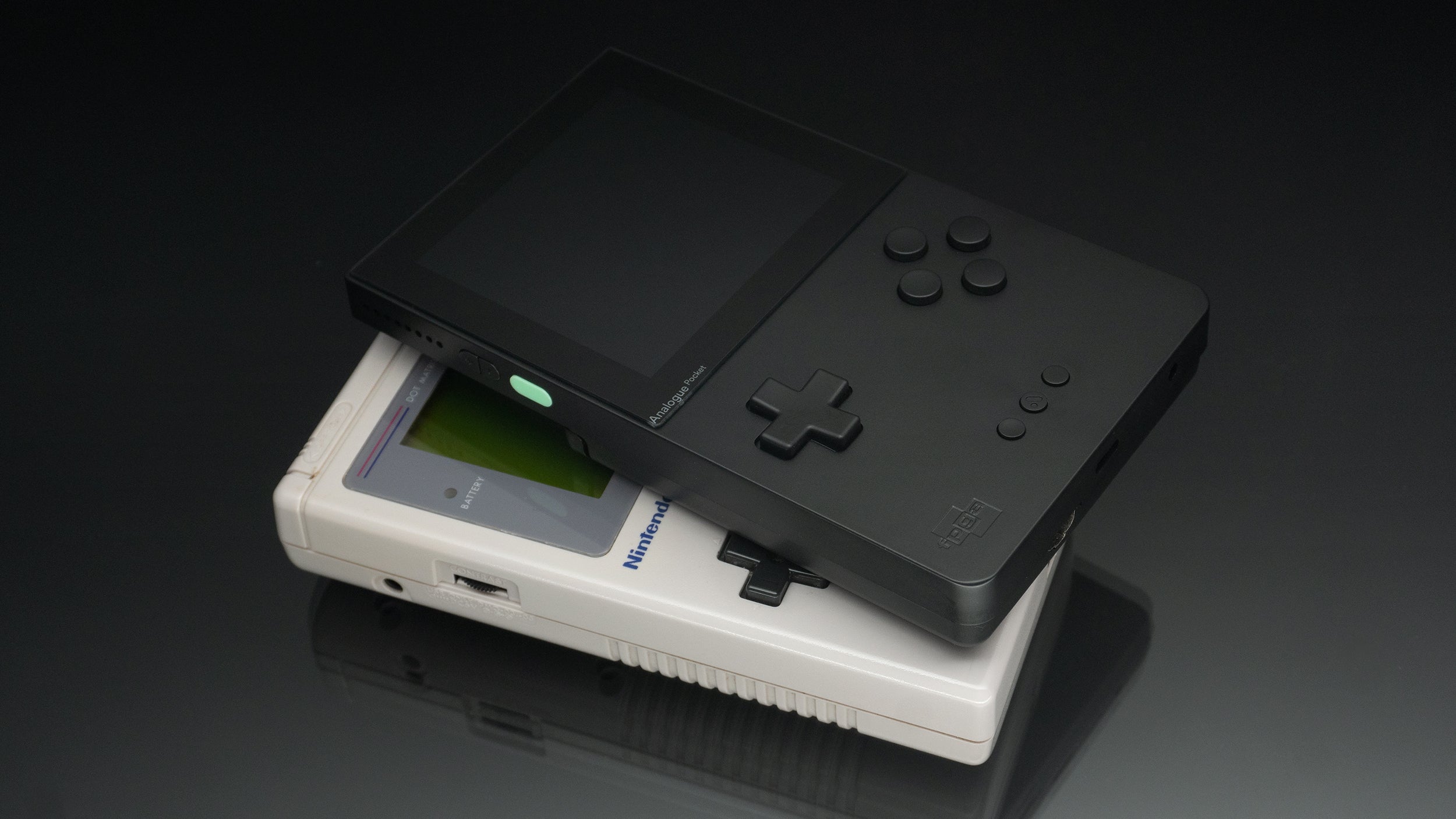
I would not be surprised if Analogue did this deliberately, but the Pocket has nearly the exact same dimensions as the original Nintendo Game Boy, although the updated hardware is slightly thinner, and it doesn’t come with a ferocious appetite for AA batteries.
Most of the retro handhelds I’ve reviewed over the past few years are much smaller by comparison, but the Pocket justifies its footprint with what is probably the best screen included on a handheld console to date. It’s not an OLED like the new Switch uses, but is instead a 3.5-inch LCD with a resolution of 1600 x 1440 pixels. The original Game Boy’s screen had just 23,040 pixels in total, but the Pocket pushes 2.304 million at 615 pixels per inch. For comparison, the iPhone 13 Pro’s screen tops out at 460 ppi.
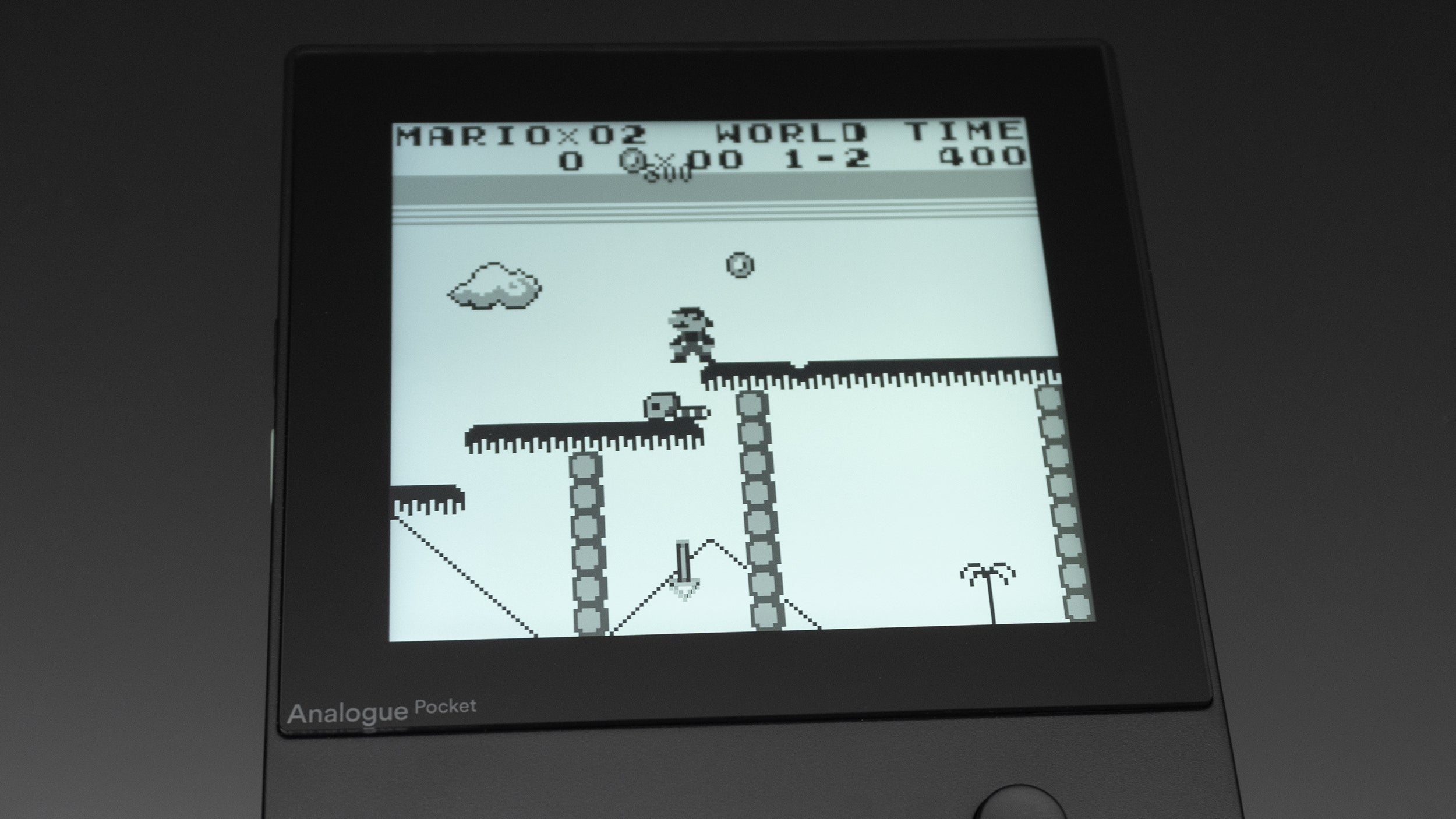
Game Boy, Game Boy Colour, Game Boy Advance, and Sega Game Gear games all look fantastic on the Pocket’s screen. Graphics are sharp and crisp with deep colour saturation and accurate reproduction which means that some games might actually look a little different than you remember as developers tailored graphics to the limitations of the screen tech decades ago. The green grass in Mario Golf Advance Tour, for example, is now especially bright — bordering on neon — when played on the Pocket. That’s not necessarily a bad thing, but for those who want as authentic a retro gaming experience as possible, Analogue cleverly leverages the Pocket’s high-resolution screen for another slick feature.
Your Favourite Games Exactly As You Remember Them
Most handheld emulators on the market let you customise the look of the games you’re playing through filters, but for the Pocket, Analogue recreated how the screens on all the Game Boys actually worked, resulting in different display modes that can be easily and instantly toggled while you play.

These display modes are, without a doubt, my favourite feature of the Pocket. They’re available for every handheld console the Pocket supports, but here I’ve focused on some of the ‘Original Display Modes’ for the Game Boy. The standard Analogue mode simply presents games in black or white (or with a subtle splash of colour if you prefer) but it can also perfectly emulate how games appeared on the original Game Boy’s ugly grey and green display, the Game Boy Pocket, which toned down the green and improved the contrast, and even the Game Boy Light, which was the first with a backlit screen that looked like the Indiglo backlighting on Timex digital watches.

When I say the Pocket perfectly emulates the look of these old handhelds, I mean the effect is flawless — minus the fact that the screen now glows. Zooming in on the Game Boy display mode, you can see how the original handheld’s pixelated screen has been recreated in incredible detail on the Pocket, with even the inactive pixel grid in the background still visible, as it was on the original. And because these aren’t filters, the various modes don’t affect game play in any way.
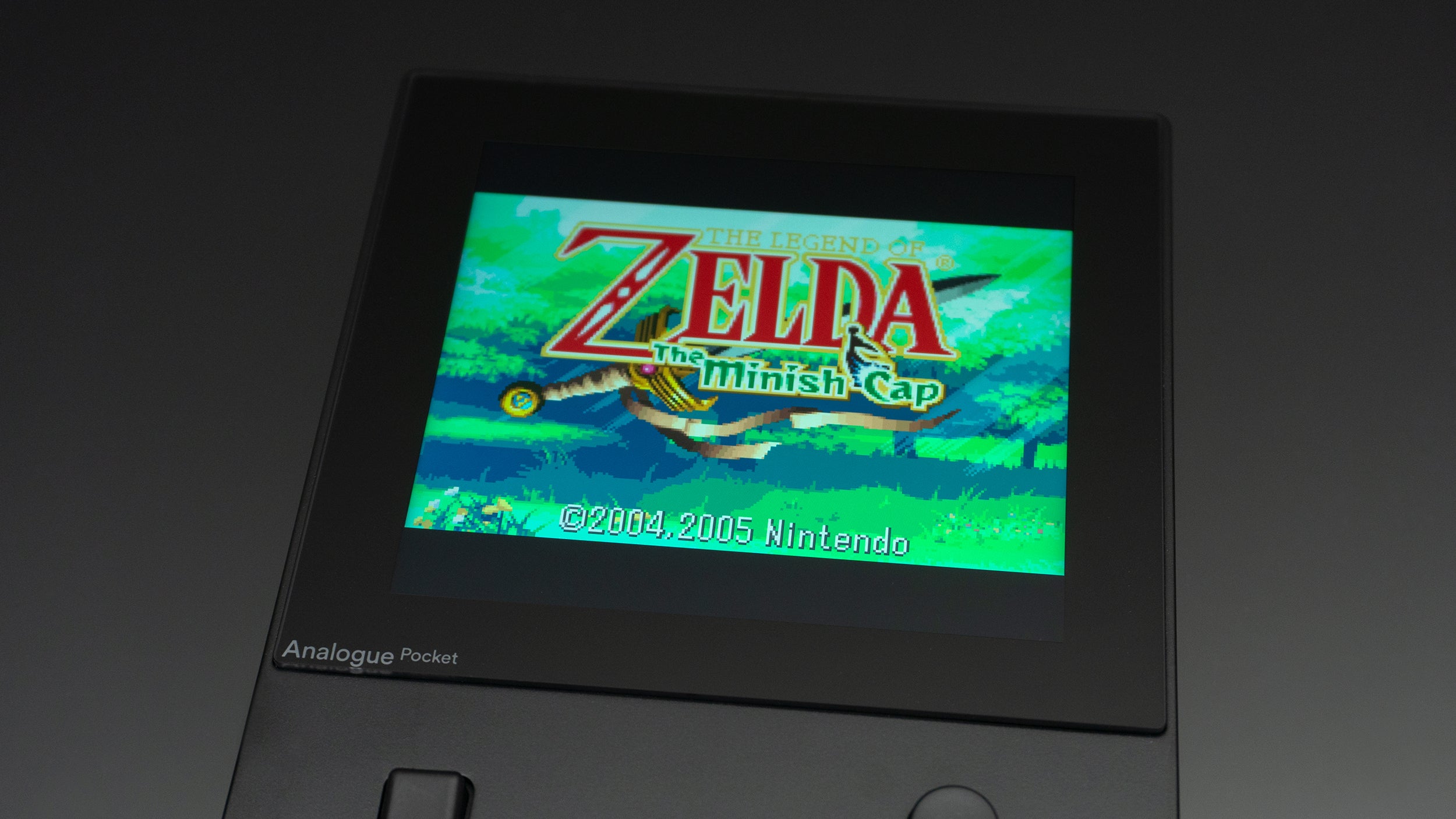
The same goes for Game Boy Advance and Sega Game Gear games — the Pocket doesn’t yet support Atari Lynx or Neo Geo Pocket Colour titles, but that’s en route — with the alternate display modes severely desaturating colours and adding pixel grid lines so it feels like you’re gaming in the late ‘90s. The only caveat is that with a square screen that prioritises Game Boy titles, games from consoles with wider aspect ratio screens like the GBA will get letterboxed.
A Minimalist Design That Puts the Games First
As with Analogue’s older consoles, the design of the Pocket’s hardware can be described as minimalist, and while it’s definitely aesthetically pleasing and helps put the focus on the games themselves, I do have a few minor complaints.
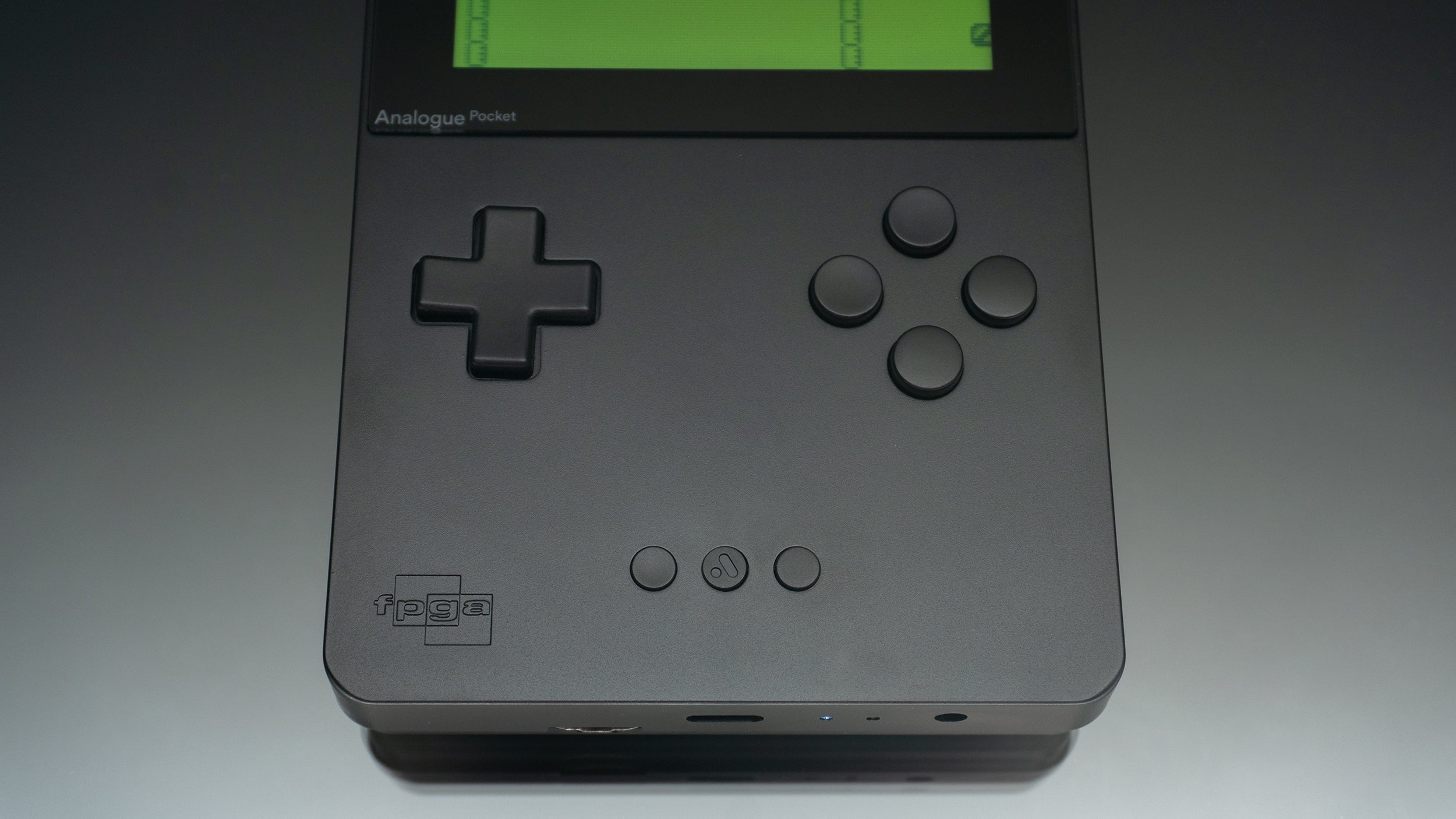
The controls on the front of the Pocket are all unlabelled, which is something I had assumed would be a bigger issue than has turned out to be. Occasionally a game will ask for a specific button to be pressed, A or B, and you might mistakenly hit the wrong one, but it’s rarely a ‘Game Over’ situation. The buttons all feel fantastic with just enough tactile response to be ideal for mashing while not feeling cheap. My only real complaint is the lack of any texture on the directional pad itself. It’s got a matte finish, but can still sometimes feel a little too slippery under my thumb.
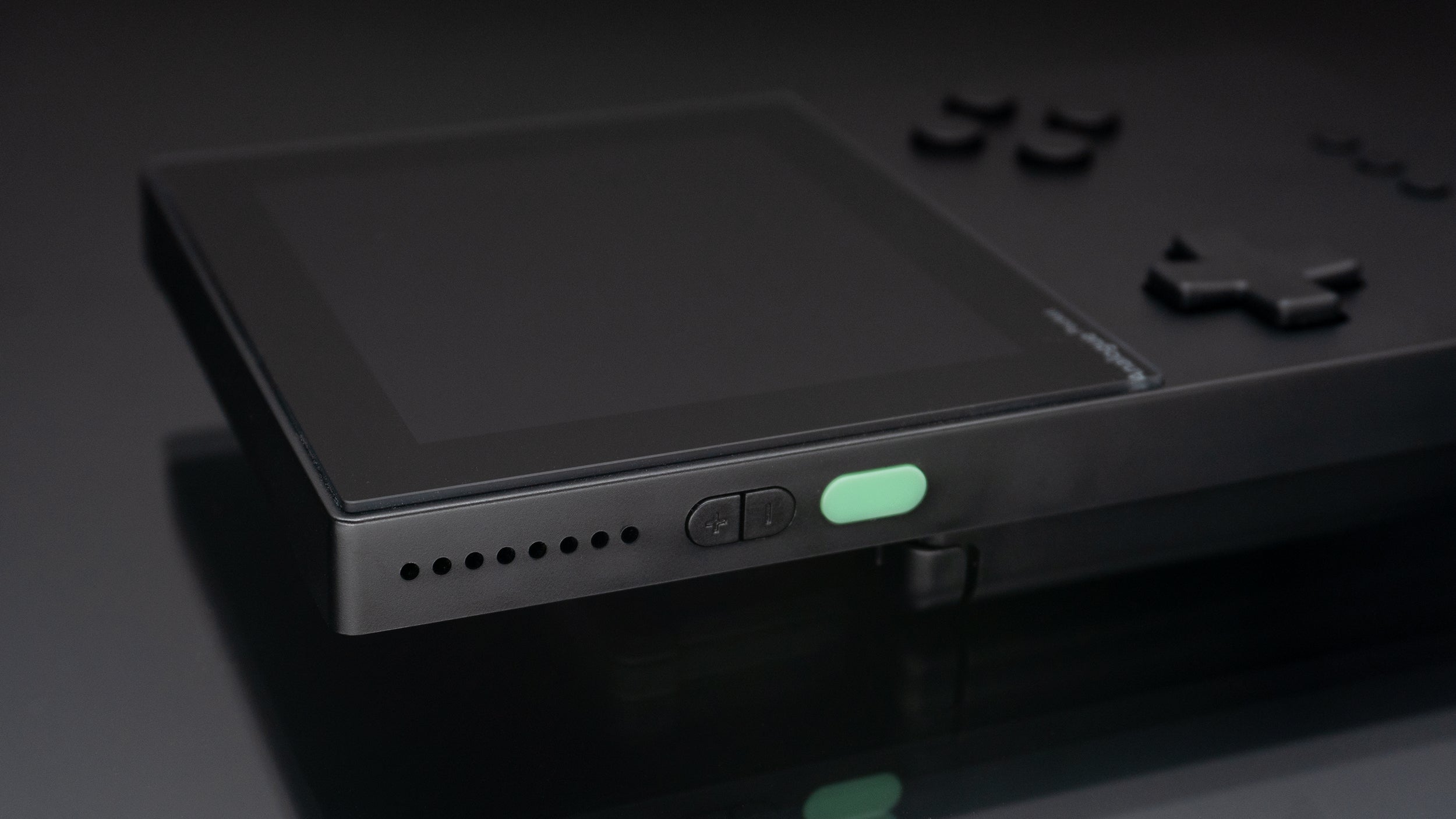
On the Pocket’s left side you’ll find a green power button that’s also used to put the console to sleep or wake it back up to resume progress in the middle of a game. Volume up and down buttons double as shortcuts for adjusting the brightness of the display. They also toggle muting when pressed together. I actually find them a little too small and close together to easily differentiate, and on more than one occasion I’ve accidentally hit the power button when i was just trying to turn down the volume.
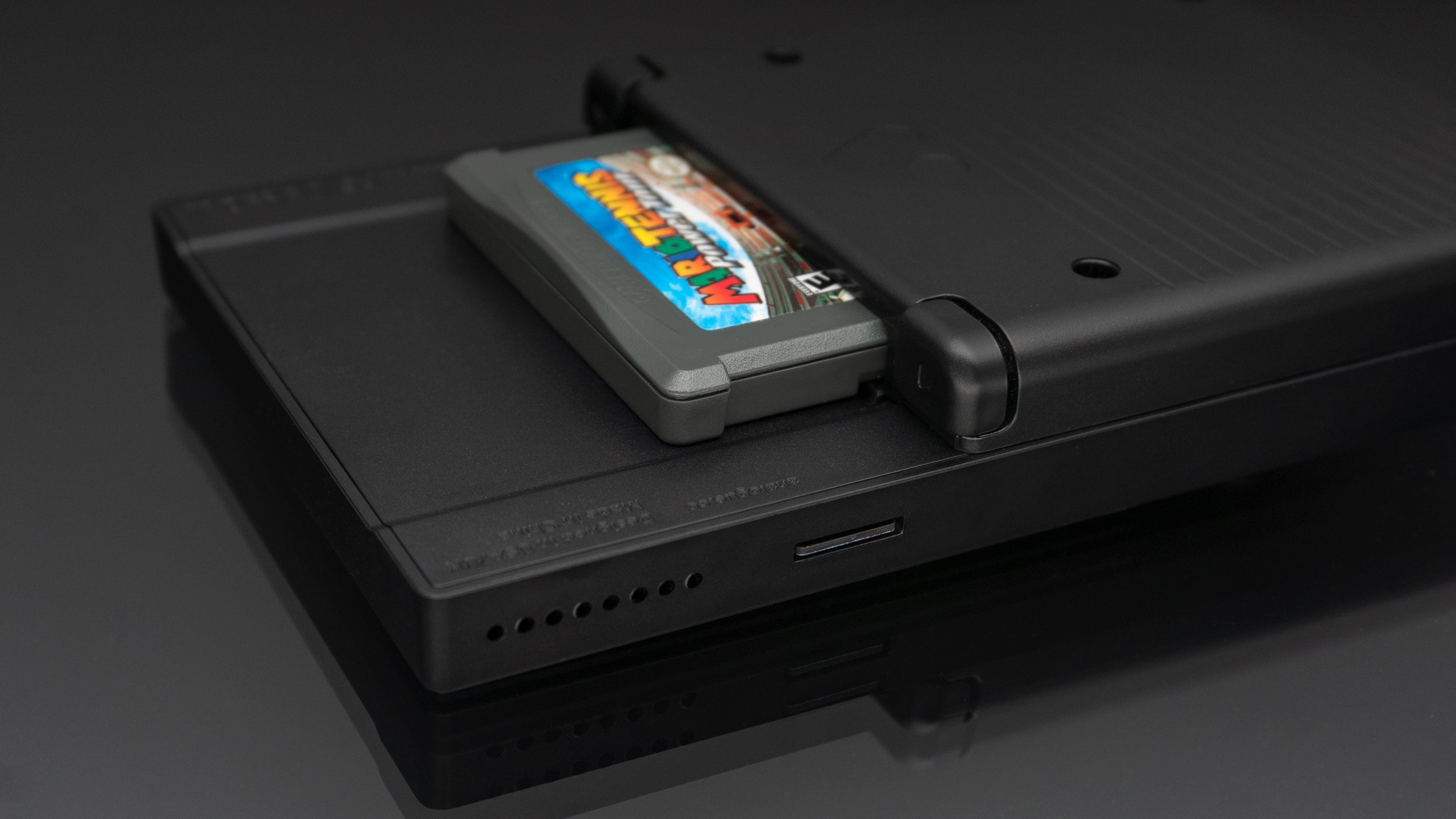
On the right side of the console you’ll find a microSD card slot, which is currently used for performing firmware upgrades (the Pocket doesn’t have any internet connectivity) but eventually will be used for sharing game save data and other functionality. You’ll also notice the speaker grills on either side of the screen. The Pocket can get very loud at full volume, but when maxed out the sound tends to be a bit tinny as you push the tiny speakers inside. You can also look at this as another way the Pocket perfectly emulates older handhelds.
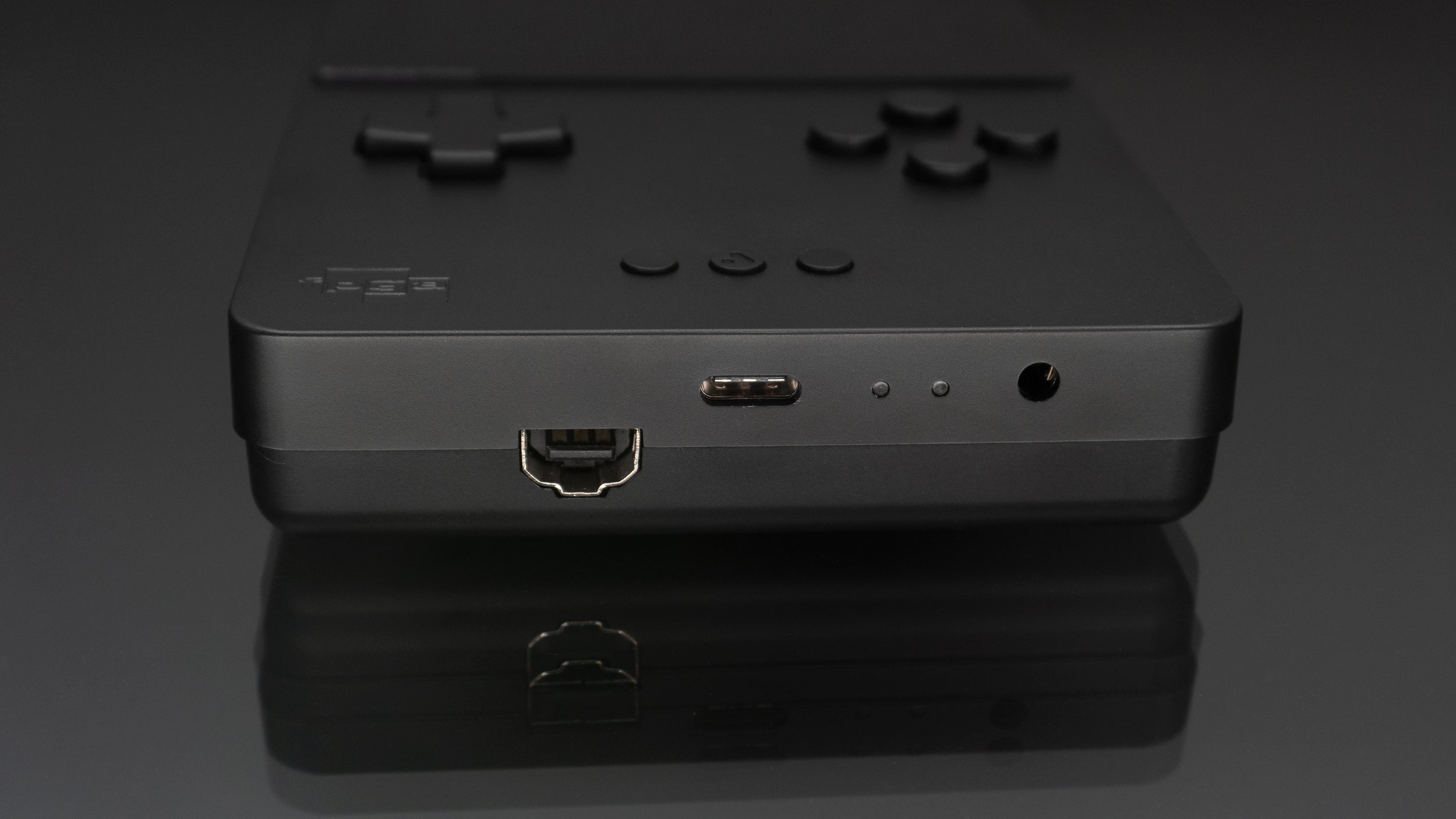
On the bottom of the Pocket you’ll find a USB-C charging port, a status LED, a headphone jack, and a link cable port plus infrared port that emulates the basic wireless communication capabilities of the Game Boy Colour. Not only can you link Pockets together for multiplayer gaming, it’s also compatible with and can communicate with older Nintendo handhelds. If you’ve never tried multiplayer Tetris, you’re missing out on something great.
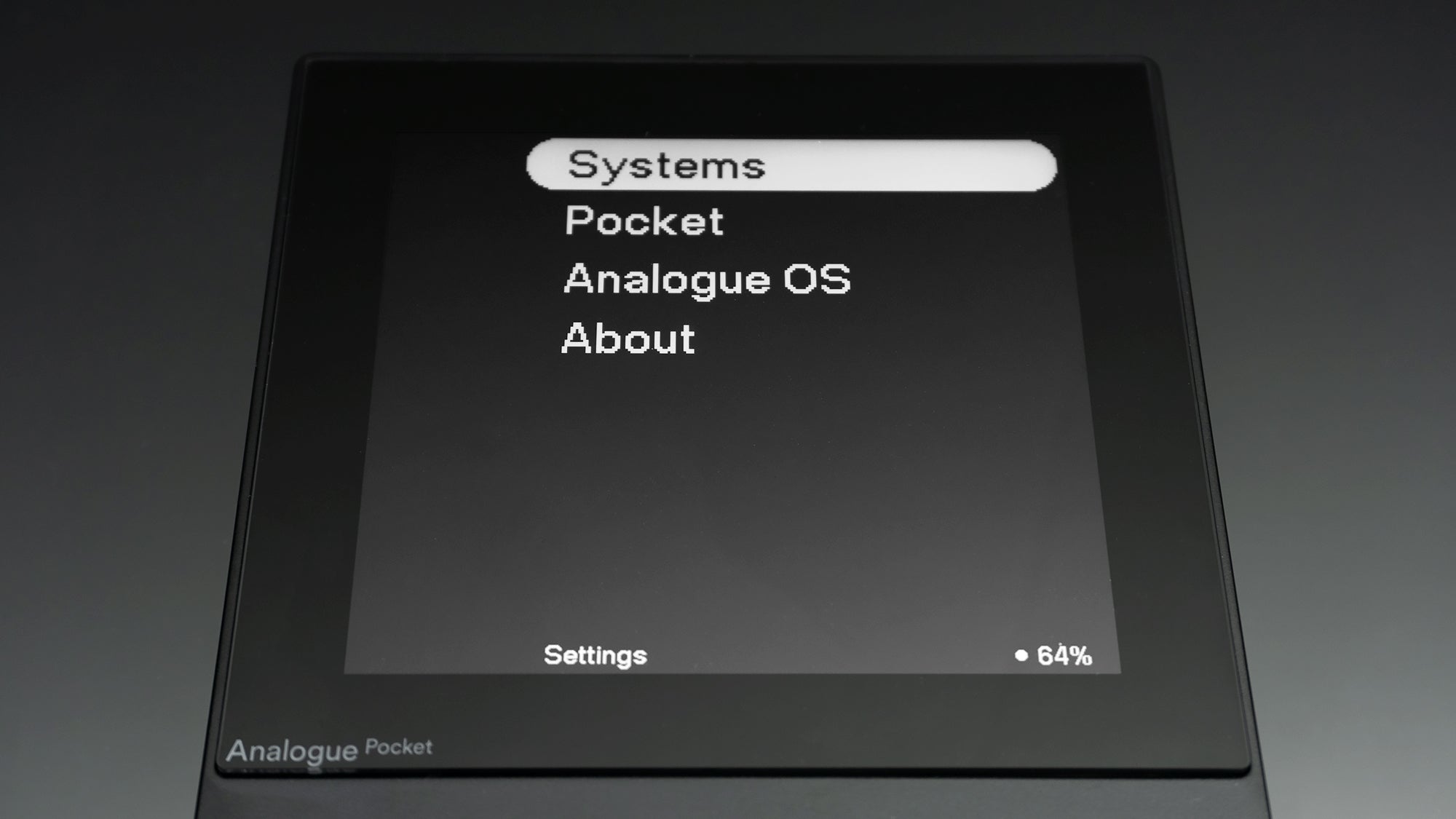
That minimalist aesthetic carries over to the Pocket’s home screen and Analogue OS. It’s a simple white text on black background affair, but the simplicity is the real appeal here. The settings and options are minimal, letting you mostly tweak how the games look on a system by system basis (there are small tweaks for controls and audio, too), but otherwise every game will just work perfectly straight away. You don’t need to change performance settings for every title to ensure it plays at an optimal frame rate or to get around a weird compatibility issue. Analogue’s approach means every game plays exactly as it did on its original hardware.
Bring Your Own Games
If you order one of the many handheld emulators coming out of China these days, there’s a good chance it will arrive with a memory card full of game ROMs of questionable legality. The Pocket does not. It is entirely dependent on original game cartridges, although Analogue says it should work with many models of flash carts if you want to use ROMs — but tip-toeing into that legal grey area territory is all on you.
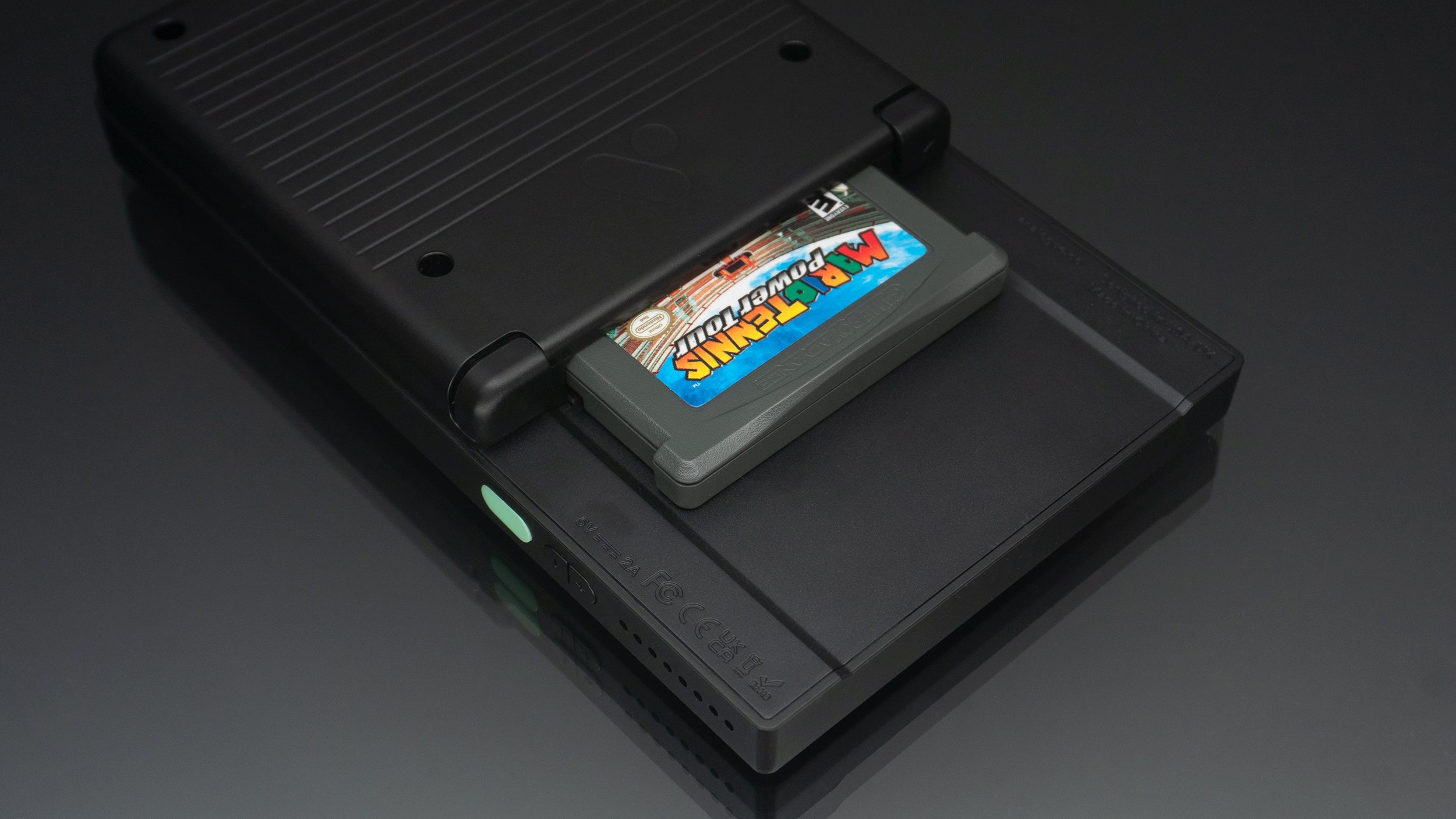
As with the Game Boy models of yesteryear, cartridges simply slot into the back of the Pocket.
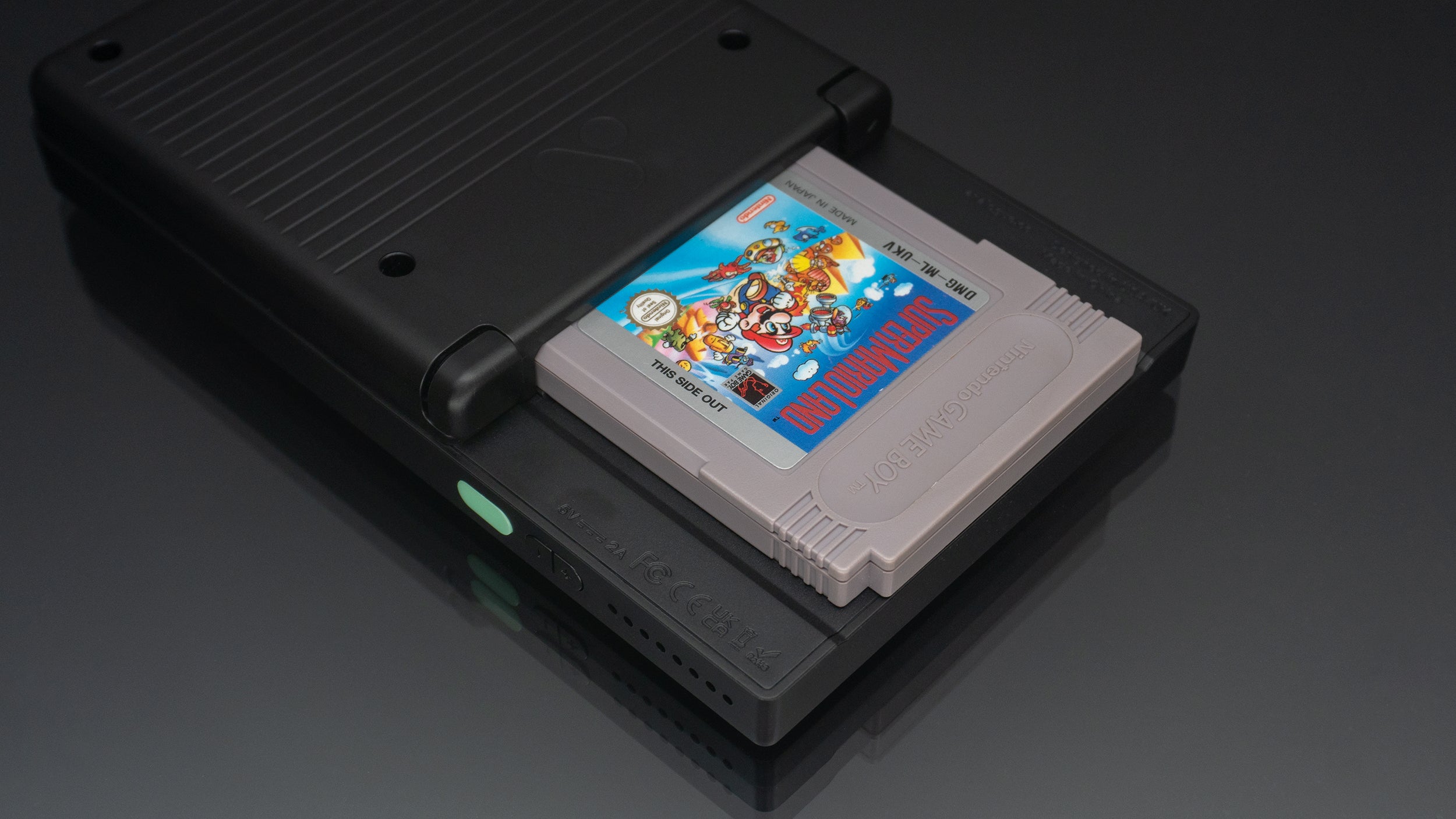
Nintendo made the Game Boy and Game Boy Advance cartridges compatible so either one can be inserted into the back of the Pocket, although taller Game Boy carts will stick out farther. Unlike the Game Boy, however, which locked cartridges in place when the power switch was flicked on (using the notch you can see in the corner of the cartridge above), you can actually swap game cartridges without turning the Pocket off. You do, however, have to return to the console’s home screen before you yank out a cart, as doing that in the middle of playing a game (which is entirely possible) will immediately bring an end to your gaming session.
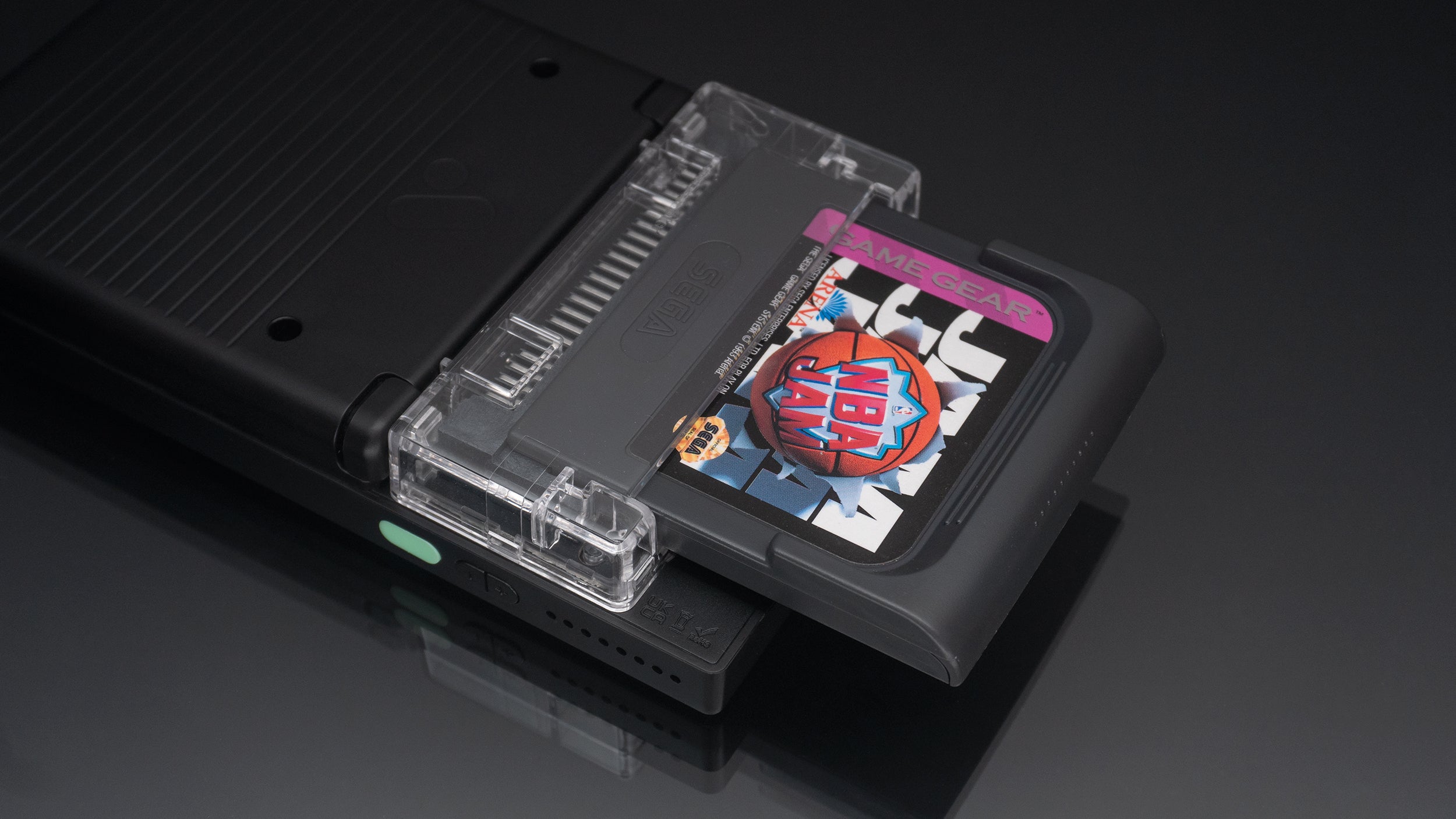
One of the most talked about features of the Analogue Pocket is the fact that it can also play Sega Game Gear and, eventually, Atari Lynx and even NEO GEO games through the use of cartridge adapters. Having tested it with a copy of NBA Jam for the Game Gear, the feature definitely works, and Game Gear titles run as flawlessly on the Pocket as Game Boy titles do, but using those adapters is a bit awkward.
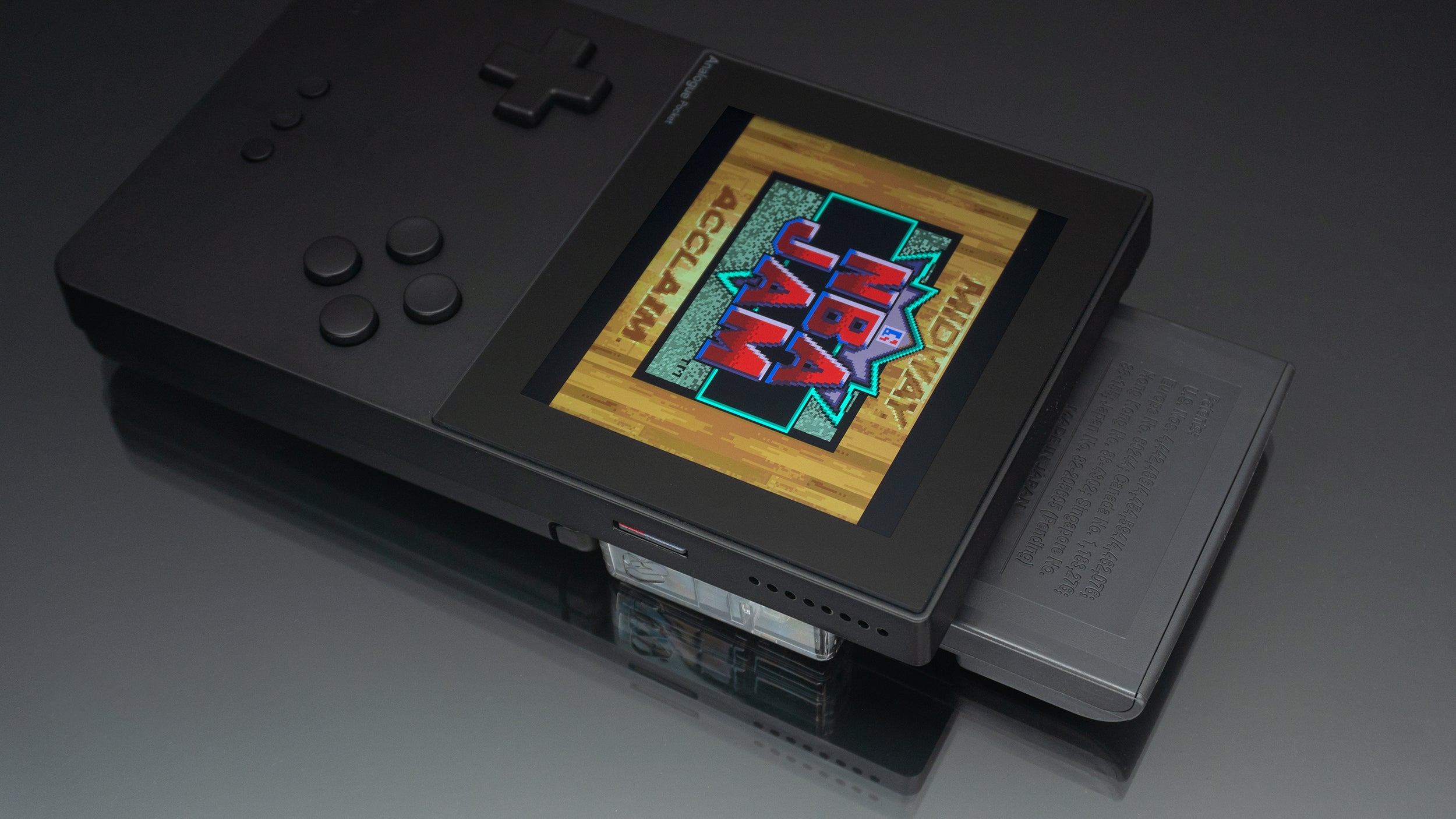
The fact that a single handheld can play original games from handhelds released by several different companies is a real accomplishment, I just can’t ever see myself using these cartridge adapters anywhere but at home. As you can see, the NBA Jam cartridge ends up sticking out a considerable amount over the top of the Pocket, which dramatically reduces its portability, especially if you’re using a case.
I’m not saying I have a better solution, and if I was a devoted Game Gear or Atari Lynx fan I’d probably be over-joyed that the Pocket was compatible with those games too. But I’ll probably stick to Game Boy and Game Boy Advance games with the Pocket.
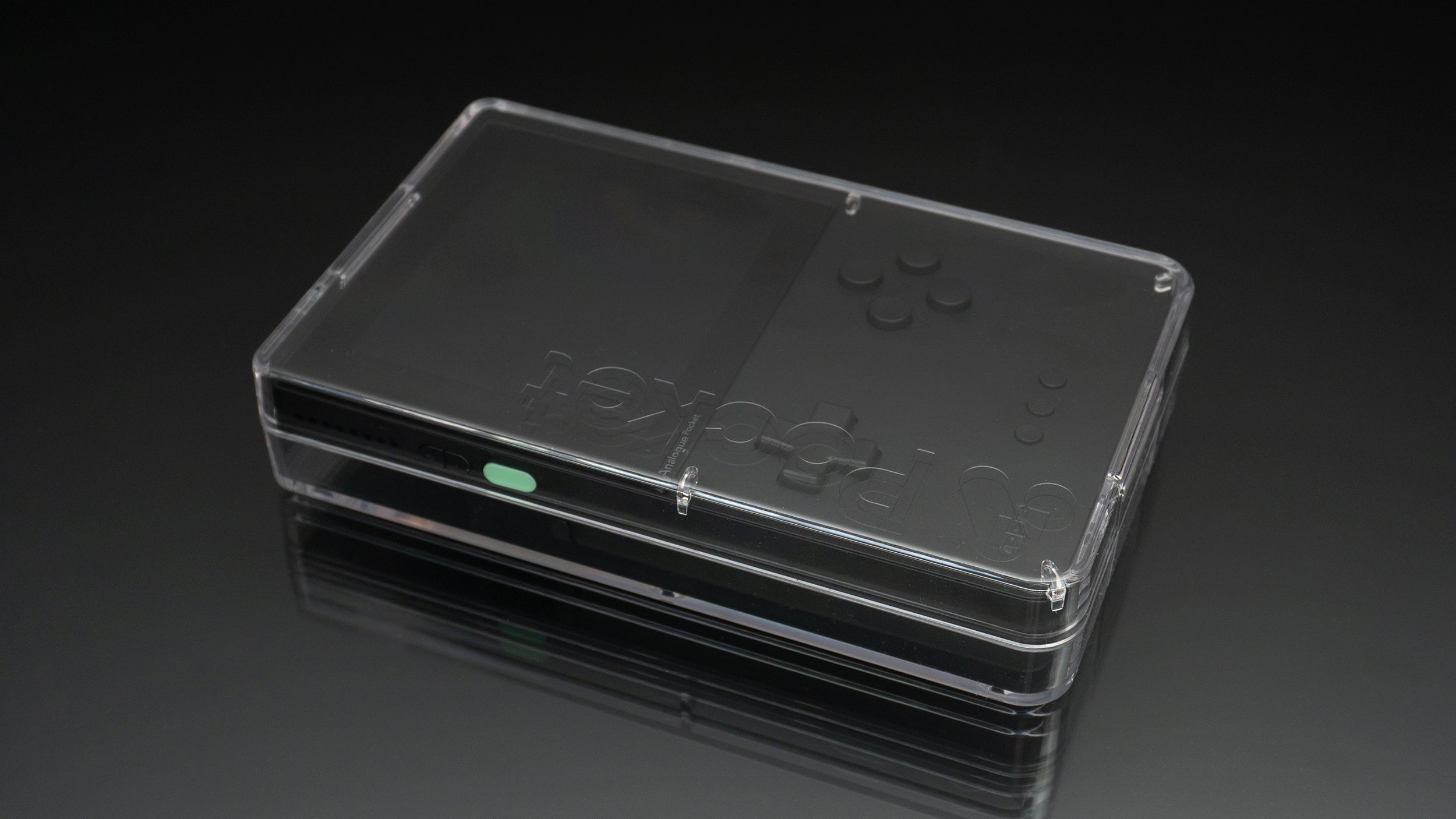
A Must-Have Upgrade For Retro Handheld Gaming Fans
If you regularly still enjoy the portable games you played as a youth, the Analogue Pocket is simply a must-have upgrade that will ensure you can continue to enjoy those games, in their full glory, for years to come. At $US219 ($308) (the price was recently increased) it’s not cheap, but at the same time it’s also not prohibitively expensive given the hard work and engineering that has gone into its creation.
Compared to the myriad of more affordable handheld emulators available today, the Pocket is not only much easier to use, it just works, flawlessly, without requiring deep dives into settings and options to solve the countless problems software emulation brings with it. It’s been a long wait for the Pocket, there’s no doubt about that, but Analogue has delivered exactly what all of us had hoped it would: the best possible way to enjoy our favourite retro handheld games.
Editor’s Note: Release dates within this article are based in the U.S., but will be updated with local Australian dates as soon as we know more.
